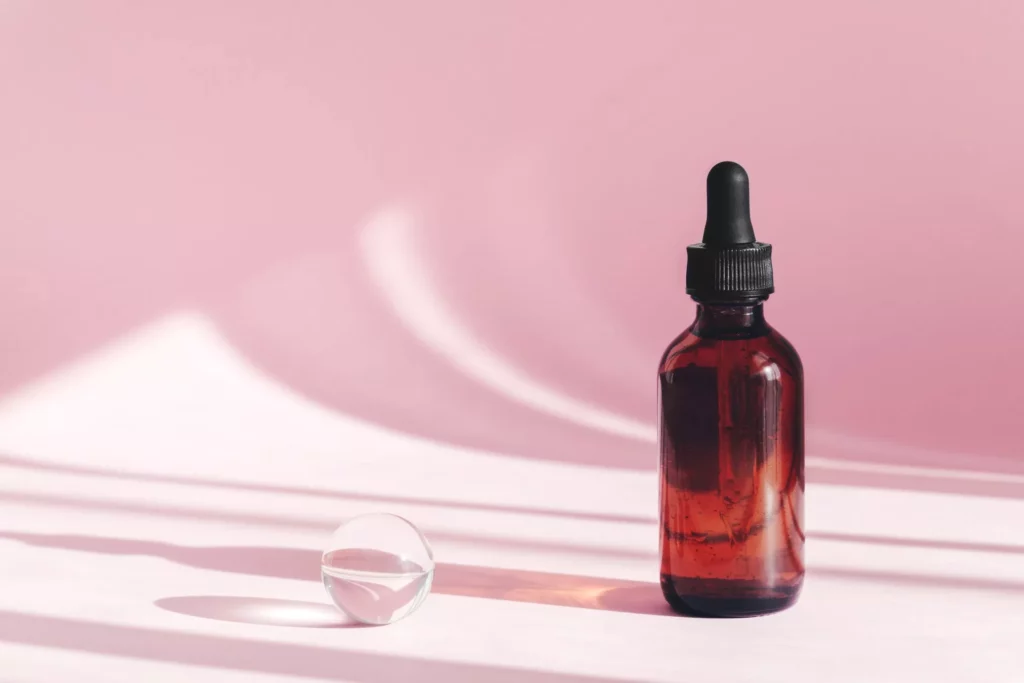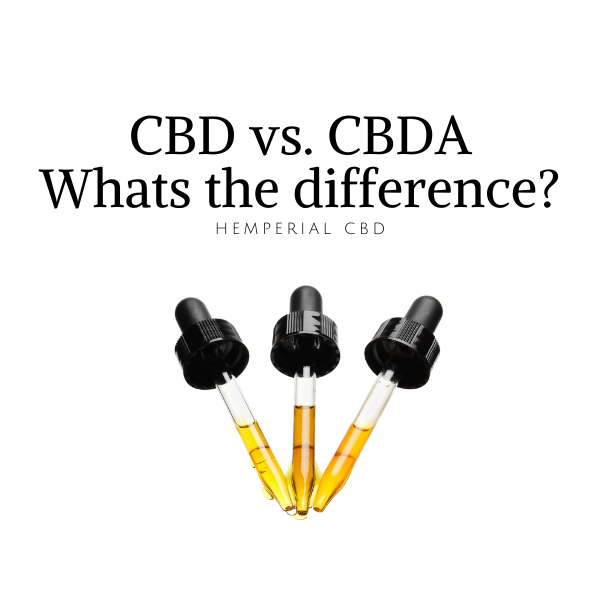What is CBD and CBDA? Cannabidiol (CBD) and cannabidiolic acid (CBDA) are two of the most abundant and well-known cannabinoids found in the Cannabis plant. CBD vs. CBDA: CBD and CBDA are both compounds derived from the cannabis plant, with similar chemical structures, but different properties and effects.
CBD is a non-intoxicating cannabinoid, meaning it does not produce the “high” associated with THC. It has been studied for its potential therapeutic benefits in the treatment of various ailments, including chronic pain, insomnia, anxiety, depression, and more.
CBDA is a precursor to CBD, meaning it is the precursor molecule that CBD is derived from. It is a non-intoxicating cannabinoid, but it is not as well studied as CBD. It is thought to have potential benefits in the treatment of various ailments, such as inflammation, nausea, and pain.
Both CBD and CBDA interact with the body’s endocannabinoid system and are thought to produce therapeutic effects. However, they have different chemical structures and molecular weights, which means they are absorbed differently in the body. They also have different effects on the endocannabinoid system, and each may have potential therapeutic benefits when used alone or in combination with other cannabinoids.
What is CBD?
Cannabidiol (CBD) is a naturally occurring compound found in the Cannabis plant. It is one of the most abundant cannabinoids in the plant and has been studied for its potential therapeutic benefits in the treatment of various ailments, including chronic pain, insomnia, anxiety, depression, and more.
CBD is non-intoxicating, meaning it does not produce the “high” associated with THC. It is thought to interact with the body’s endocannabinoid system to produce therapeutic effects.
CBD is available in many forms, including oils, capsules, edibles, and topicals. It can also be smoked or vaporized for quick relief. CBD is generally considered safe and is well-tolerated, but it is important to speak to a healthcare professional before taking it.
CBD is gaining popularity as a natural remedy, and more research is being done to understand its potential benefits.
What is CBDA?
Cannabidiolic acid (CBDA) is a cannabinoid found in the Cannabis plant. It is the precursor molecule to CBD, meaning it is the molecule from which CBD is derived. CBDA is not as well studied as CBD, but it is thought to have potential therapeutic benefits in the treatment of various ailments, such as inflammation, nausea, and pain.
CBDA is non-intoxicating and is thought to interact with the body’s endocannabinoid system to produce therapeutic effects. It is available in various forms, such as oils and capsules.
More research is being done to explore the possible advantages of CBDA, which is becoming more and more popular as a natural medicine. Although it is typically thought to be safe and well-tolerated, it is crucial to consult a healthcare provider before using it.
The Similarities Between CBD and CBDA
CBD and CBDA are both compounds derived from the Cannabis plant, with similar chemical structures and effects on the body. Both interact with the body’s endocannabinoid system and are thought to produce therapeutic effects.
Since neither CBD nor CBDA are intoxicating cannabinoids, they do not result in the same “high” as THC. They can both be smoked or vaporized for rapid relief and come in a variety of forms, including oils and capsules.
Increasingly research is being done to explore the potential advantages of CBD and CBDA, which are both becoming more well-known as natural treatments. Although they are typically regarded as safe and well-tolerated, it is crucial to see a healthcare provider before using them.
How does CBD and CBDA interact with the endocannabinoid system?
CBD and CBDA interact with the body’s endocannabinoid system, the system responsible for the regulation of many bodily processes. They both bind to endocannabinoid receptors, creating a complex network of interactions within the body.
These interactions can influence the release of neurotransmitters, hormones, and other chemicals in the body, which can have a therapeutic effect. For example, CBD and CBDA have both been studied for their potential to reduce inflammation and pain, as well as to reduce anxiety and depression.
In addition, CBD and CBDA can interact with other cannabinoids, creating an entourage effect that can enhance the therapeutic effects of one another. This means that CBD and CBDA may be more effective when used in combination with other cannabinoids.
The Differences Between CBD vs. CBDA

Though CBD and CBDA have similar chemical structures and effects on the body, there are some key differences between the two cannabinoids. The most notable difference is in their chemical structure and molecular weight, which affects how they are absorbed in the body.
CBD is a larger molecule than CBDA, meaning it is absorbed more slowly and has a longer-lasting effect. CBDA, on the other hand, is a smaller molecule and is absorbed more quickly. This means that CBDA has a shorter-lasting effect than CBD.
Additionally, the endocannabinoid system is affected in different ways by CBD and CBDA. While CBDA interacts to the CB2 receptor, CBD binds to the CB1 and CB2 receptors. This implies that CBD and CBDA may have different physiological effects and potential therapeutic advantages.
Absorption in the Body
The different absorption rates of CBD and CBDA mean that they may be more effective when used in combination with each other. For example, CBDA may be more effective for immediate relief, while CBD may be more effective for long-term relief. Combining CBD and CBDA may create an entourage effect that can enhance the therapeutic effects of both cannabinoids.
Effects on the Endocannabinoid System
CBD and CBDA have different effects on the endocannabinoid system. CBD binds directly to the CB1 and CB2 receptors, while CBDA binds to the CB2 receptors. This difference in binding may cause different effects on the body and different potential therapeutic benefits.
Additionally, CBD and CBDA can combine with other cannabinoids to produce an entourage effect, which can boost their individual medicinal effects. This implies that when combined with other cannabinoids, CBD and CBDA may be more potent.
Both CBD and CBDA have been investigated for their potential to lower anxiety and depressive symptoms, as well as inflammation and pain. Additionally, they may be useful in the treatment of a number of conditions, including nausea, seizures, and appetite stimulation. To fully comprehend the impacts of CBD and CBDA on the endocannabinoid system, more research is needed.
Benefits of CBD and CBDA
CBD and CBDA have both been studied for their potential therapeutic benefits. CBD has been studied for its potential to reduce inflammation and pain, as well as to reduce anxiety and depression. It may also have potential benefits in the treatment of various ailments, such as insomnia, seizures, and appetite stimulation.
CBDA is not as well studied as CBD, but it is thought to have potential benefits in the treatment of various ailments, such as inflammation, nausea, and pain. In addition, CBD and CBDA may be more effective when used in combination with other cannabinoids, creating an entourage effect that can enhance the therapeutic effects of one another.
It is important to speak to a healthcare professional before taking CBD or CBDA, as they may interact with other medications or supplements.
Potential Benefits of CBD
CBD has been studied for its potential therapeutic benefits in the treatment of various ailments, including chronic pain, insomnia, anxiety, depression, and more. It is thought to interact with the body’s endocannabinoid system to produce therapeutic effects.
Due to its ability to lower inflammation and pain, CBD may be useful in the treatment of chronic pain. Along with treating sleeplessness, seizures, and appetite stimulation, it may also be helpful in lowering anxiety and despair.
It is important to note that CBD is not a cure-all, and more research is needed to understand its potential benefits. It is also important to speak to a healthcare professional before taking CBD, as it may interact with other medications or supplements.
Potential Benefits of CBDA
Although CBDA has not been the subject of as much research as CBD, it is believed to have medicinal potential for the treatment of a number of conditions, including pain, nausea, and inflammation. Additionally, it is believed to have potential advantages in the management of insomnia, seizures, hunger stimulation, and the reduction of anxiety and despair.
Additionally, a cannabinoid entourage effect, which can boost each other’s therapeutic effects, may make CBDA more potent when used in conjunction with other cannabinoids. This suggests that using CBDA and CBD combined may increase its potency.
Before using CBDA, it’s recommended to see a doctor because it could interact with other drugs or dietary supplements. To fully grasp the potential advantages of CBDA, more study is required.
Conclusion on CBD vs. CBDA
To conclude two of the most prevalent and well-known cannabinoids present in the cannabis plant are CBD and CBDA. They both come from the cannabis plant and share a similar chemical structure, but they have different affects and qualities.
Both CBD and CBDA are believed to have therapeutic effects because of their similar effects on the endocannabinoid system of the body. They are, however, absorbed differently in the body because they have various chemical structures and molecular weights. They each may have therapeutic advantages when used alone or in conjunction with other cannabinoids, and they each have various effects on the endocannabinoid system.
Increasingly research is being done to explore the potential advantages of CBD and CBDA, which are both becoming more well-known as natural treatments. Although they are typically regarded as safe and well-tolerated, it is crucial to see a healthcare provider before using them. Using CBDA and CBD together may increase the therapeutic benefits of both cannabinoids by producing an entourage effect.
